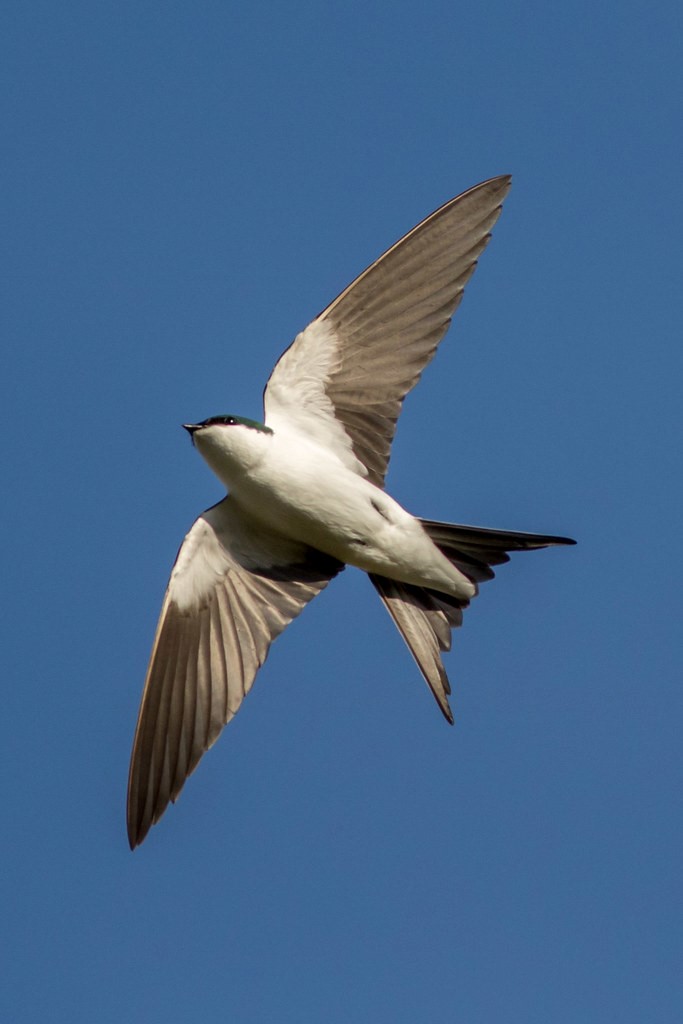Birdfinding.info ⇒ Endangered, declining, and disappearing from some parts of its range. Abaco is the Bahama Swallow’s last true stronghold—although the full impact of Hurricane Dorian in September 2019 remains uncertain. Prior to Dorian, it could be found reliably year-round nearly throughout Abaco, especially from Marsh Harbour south to Abaco National Park, and in the north at Treasure Cay. On Grand Bahama, where Dorian’s impact was even stronger, it has traditionally been found most consistently in Freeport and at Freetown Farm. On Andros, it has become uncommon but still usually present in small numbers at various sites from Nicholls Town to Andros Town. No longer resident on New Providence, but small numbers continue to appear unpredictably anywhere around the island at any time of year. In Cuba, it has been regular in recent winters on Cayo Guillermo.
Bahama Swallow
Tachycineta cyaneoviridis
Family: Hirundinidae
Endemic to the Bahamas, where it breeds on Grand Bahama, Abaco, and Andros. Formerly also on New Providence, where it become an occasional visitor, and it appears to be on the verge of disappearing from Grand Bahama as well.
Some nonbreeders remain on the breeding grounds, while others disperse southward into the central Bahamas and in small numbers, or sporadically, to the southern Bahamas, Turks & Caicos, and the north-central keys of Cuba.
In 2016, IUCN estimated its total population at somewhere between 1,500 and 4,000 individuals, less than half of the 1989 population estimate.
There are about a dozen records from southern Florida—most in spring and summer on the Florida Keys in the 1970s and ‘80s. One famous individual summered annually at a Cave Swallow colony at Cutler Ridge in South Miami from 1988 to 1992.
Identification
A blue, green, black, and white swallow with a deeply forked tail.
The crown, nape, and back have a glossy moss-green sheen. The wings, rump, and tail shade from deep metallic blue to black.
Juveniles have the same pattern as adults, but with brown upperparts.

Bahama Swallow, showing diagnostic white wing-linings and deeply forked tail. (Treasure Cay, Abaco, Bahamas; January 3, 2017.) © Robert Norton
In flight, the undersides of the wings show white linings, which distinguish it from all similar species likely to overlap with it. Both adults and juveniles have this diagnostic feature.

Bahama Swallow, showing green and blue sheen on upperparts. (Treasure Cay, Abaco, Bahamas; January 3, 2017.) © Robert Norton
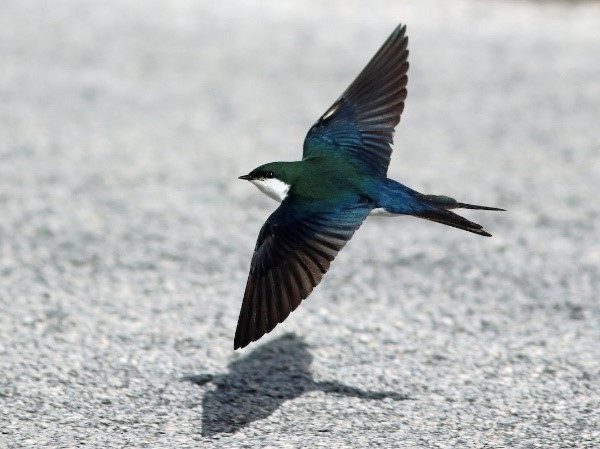
Bahama Swallow, showing rich green and blue sheen on upperparts. (The Y, South Abaco, Bahamas; May 25, 2017.) © Brendan Fogarty
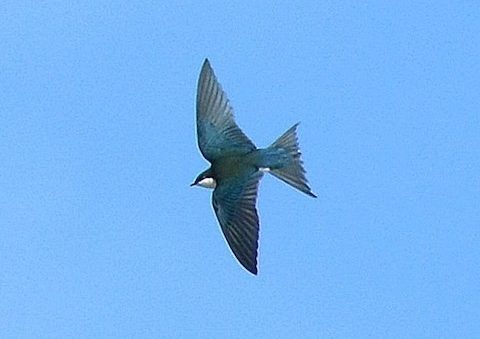
Bahama Swallow, showing green and blue sheen on upperparts. (Treasure Cay, Abaco, Bahamas; January 3, 2017.) © Robert Norton
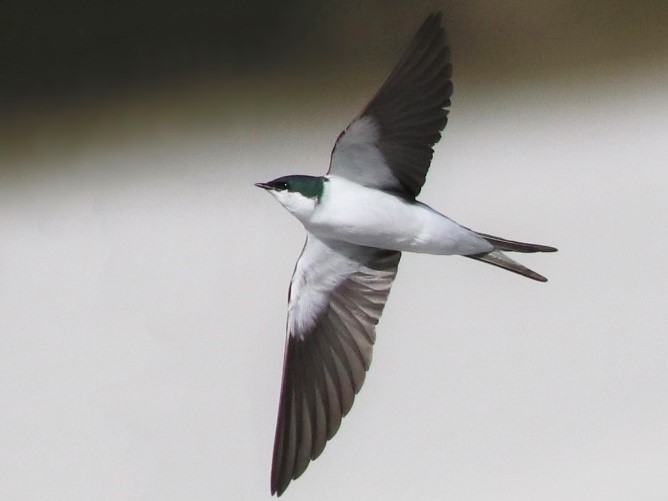
Bahama Swallow, showing diagnostic white wing-linings and deeply forked tail w. (The Y, South Abaco, Bahamas; May 25, 2017.) © Brendan Fogarty
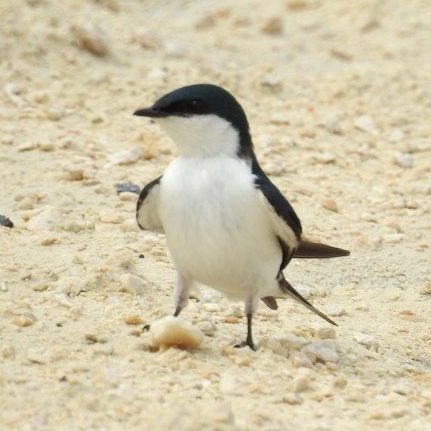
Bahama Swallow, weakly illuminated and showing mostly blackish upperparts. (Freetown Farm, Grand Bahama; May 24, 2018.) © Erika Gates
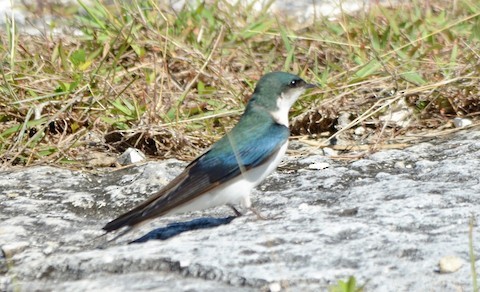
Bahama Swallow, showing green and blue sheen in strong light. (Abaco National Park, Bahamas; April 29, 2016.) © Duncan Mullis

Bahama Swallow, with upperparts poorly illuminated and showing bluish green sheen (much like a Tree Swallow). (Stink Pond Road, Abaco, Bahamas; April 26, 2018.) © Cindy Hamilton

Bahama Swallow, showing shades of green and blue on dark upperparts. (Nicholls Town, Andros, Bahamas; April 18, 2016.) © Erika Gates
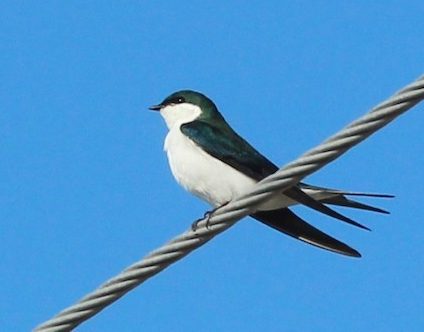
Bahama Swallow, showing deeply forked tail and mostly green sheen on upperparts. (Love Hill, North Andros, Bahamas; March 19, 2018.) © Stuart White
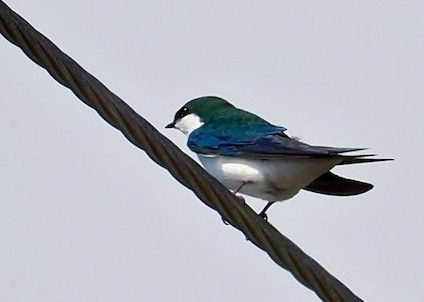
Bahama Swallow, showing rich green and blue sheen on upperparts. (Sandy Point, Abaco, Bahamas; March 5, 2019.) © Stuart White
Cf. Tree Swallow. The Bahama Swallow is very similar to the closely related Tree Swallow, which occurs throughout its range. The two species have the same contour between their dark upperparts and white underparts, but they differ in tail shape—Bahama’s is much more deeply forked—and in Bahama’s diagnostic white wing-linings.
Notes
Monotypic species.
IUCN Red List Status: Endangered.
References
Alderfer, J., and J.L. Dunn. 2014. National Geographic Complete Birds of North America (Second Edition). National Geographic Society, Washington, D.C.
BirdLife International. 2016. Tachycineta cyaneoviridis. The IUCN Red List of Threatened Species 2016: e.T22712080A94318203. http://dx.doi.org/10.2305/IUCN.UK.2016-3.RLTS.T22712080A94318203.en. (Accessed October 9, 2019.)
eBird. 2019. eBird: An online database of bird distribution and abundance. Cornell Lab of Ornithology, Ithaca, N.Y. http://www.ebird.org. (Accessed October 9, 2019.)
Garrido, O.H, and A. Kirkconnell. 2000. Field Guide to the Birds of Cuba. Cornell University Press, Ithaca, N.Y.
Howell, S.N.G., I. Lewington, and W. Russell. 2014. Rare Birds of North America. Princeton University Press, Princeton, N.J.
Ong, G. 2010. Bahama Swallow (Tachycineta cyaneoviridis), version 1.0. In Neotropical Birds Online (T.S. Schulenberg, ed.). Cornell Lab of Ornithology, Ithaca, N.Y. https://doi.org/10.2173/nb.bahswa.01
Raffaele, H., J. Wiley, O. Garrido, A. Keith, and J. Raffaele. 1998. A Guide to the Birds of the West Indies. Princeton University Press, Princeton, N.J.
